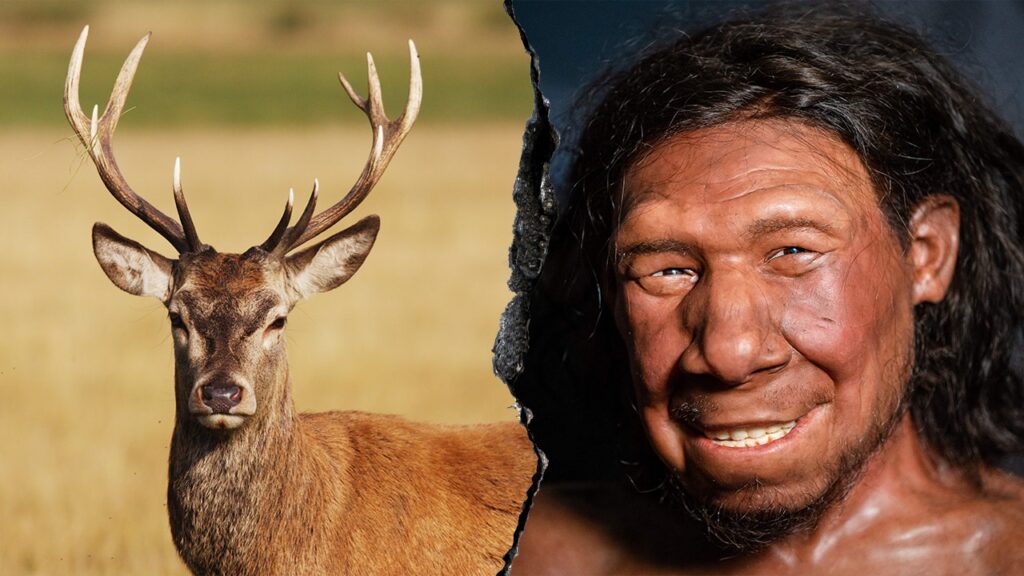
Neanderthals living 125,000 years ago in what is now modern-day Germany may have developed an organized method for extracting and consuming fat from animal bones, according to a new study. This process, described by scientists as a “fat factory,” highlights the sophisticated food preparation techniques of our extinct ancestors.
Archaeologists excavating the Neumark-Nord site, a former lake landscape, uncovered thousands of bones from at least 172 large mammals, alongside flint artifacts. These findings, dating back to an interglacial period, suggest that Neanderthals hunted animals such as red deer and horses. The study, published in Science Advances on July 2, reveals that marrow-rich bones were found clustered together, indicating specific sites for fat extraction.
Uncovering the Fat Factory
Researchers propose that Neanderthals used tools to break bones into small fragments, which were then boiled for hours. The grease that surfaced could be skimmed off and consumed, providing a crucial calorie-dense food source. This method of fat extraction predates previous evidence of similar practices by nearly 100,000 years.
“Neanderthals were clearly managing resources with precision — planning hunts, transporting carcasses, and rendering fat in a task-specific area,” said Dr. Lutz Kindler, the study’s first author. “They understood both the nutritional value of fat and how to access it efficiently.”
The Nutritional Imperative
Fat was essential for Neanderthals, especially during winter and spring when carbohydrates were scarce. Their diet, primarily composed of animal protein, required fat to prevent protein poisoning, a potentially fatal condition arising from excessive protein intake without other nutrients.
The Neumark-Nord site offers a rare glimpse into how Neanderthals interacted with their environment. Dr. Fulco Scherjon, a data manager and computer scientist on the project, noted the site’s exceptional preservation, which provides invaluable insights into Neanderthal life.
“The sheer size and extraordinary preservation of the Neumark-Nord site complex gives us a unique chance to study how Neanderthals impacted their environment, both animal and plant life,” Dr. Scherjon explained. “That’s incredibly rare for a site this old—and it opens exciting new possibilities for future research.”
Broader Implications and Future Research
This discovery adds to the growing body of evidence that Neanderthals were far more advanced than previously thought. Recent studies have shown that they engaged in activities such as diving for seashells to create cutting tools and possibly burying their dead with flowers, indicating a complex understanding of their world.
The findings at Neumark-Nord not only challenge previous assumptions about Neanderthal dietary habits but also pave the way for further exploration into their cultural and technological capabilities. As researchers continue to analyze the site, new insights into the lives of these ancient humans are expected to emerge.
While Dr. Lutz Kindler and Wil Roebroeks were unavailable for comment, their research underscores the importance of revisiting historical narratives about Neanderthals, offering a more nuanced understanding of their existence and adaptability.







